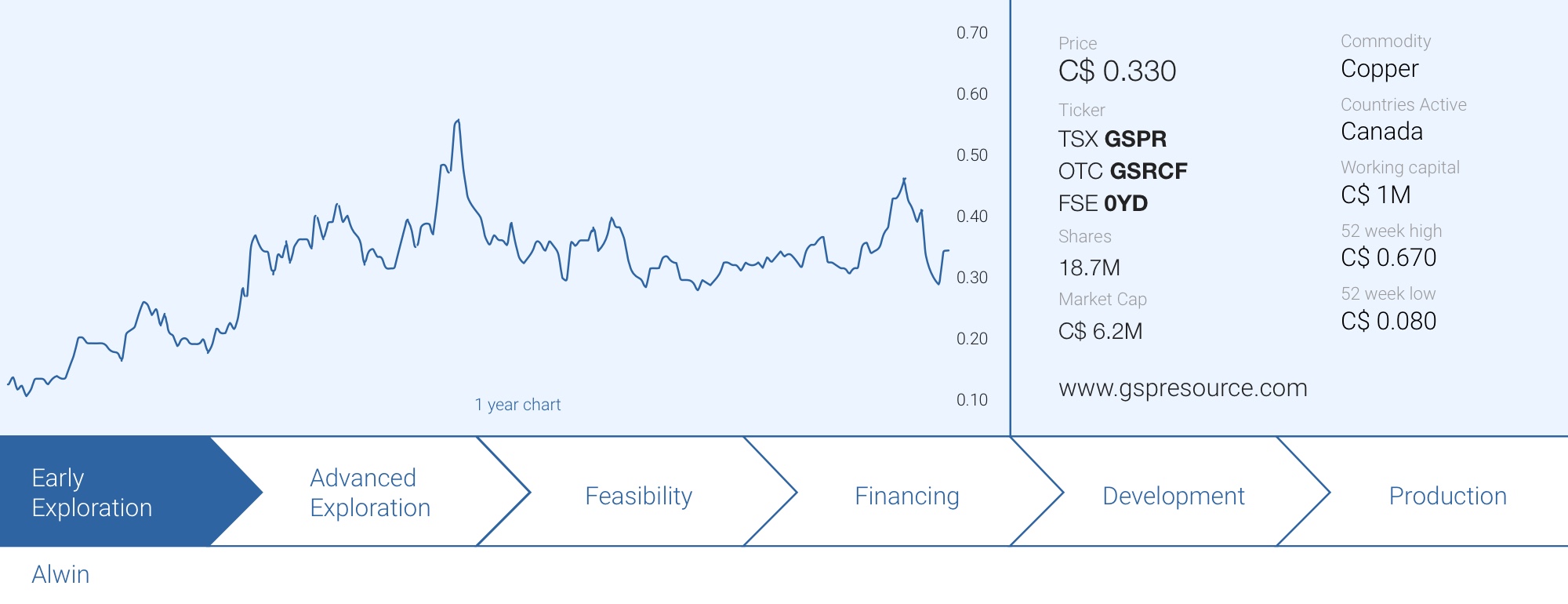
Last week, GSP Resources (GSPR.V) released assay results from the final few holes it drilled on the Alwin copper project, which is bordering Teck Resources’s (TECK, TECK.B.TO) Highland Valley Copper mine which will ramp up its production rate to 350 million pounds of copper per year in the next few years.
We caught up with CEO Simon Dyakowski to get his take on why the market reacted poorly to the drill results, and what the advantage is of drilling for copper in Teck’s backyard.
Interviewing Simon Dyakowski, CEO
You released additional drill results from your flagship Alwin copper project just last week, and the market has reacted somewhat disappointed. Could you elaborate on the assay results, and why you are encouraged by them?
GSPR’s Phase 1 drill program exceeded our expectations as 9 of the 11 holes we drilled encountered multiple intersections of mineralization exceeding the 0.09% CuEq cutoff grade of the adjacent (within a few hundred meters) giant open pit mine (Highland Valley Copper, here after ‘HVC’), with several exceeding the average grade of HVC (0.278% Cu) over mineable widths, in a shallow setting. Our headline hole was 10E that returned nearly 62 meters of 0.313% CuEq (above the HVC head grade), and hole 2 that returned 47m of 0.312% CuEq. These were the biggest positive surprises for us. We also drilled several shorter sections of high grade mineralization – and note that this was expected in our model, as we were confirming a small portion of the unmined shallow “number 4 zone” of the high grade Alwin historic mine.
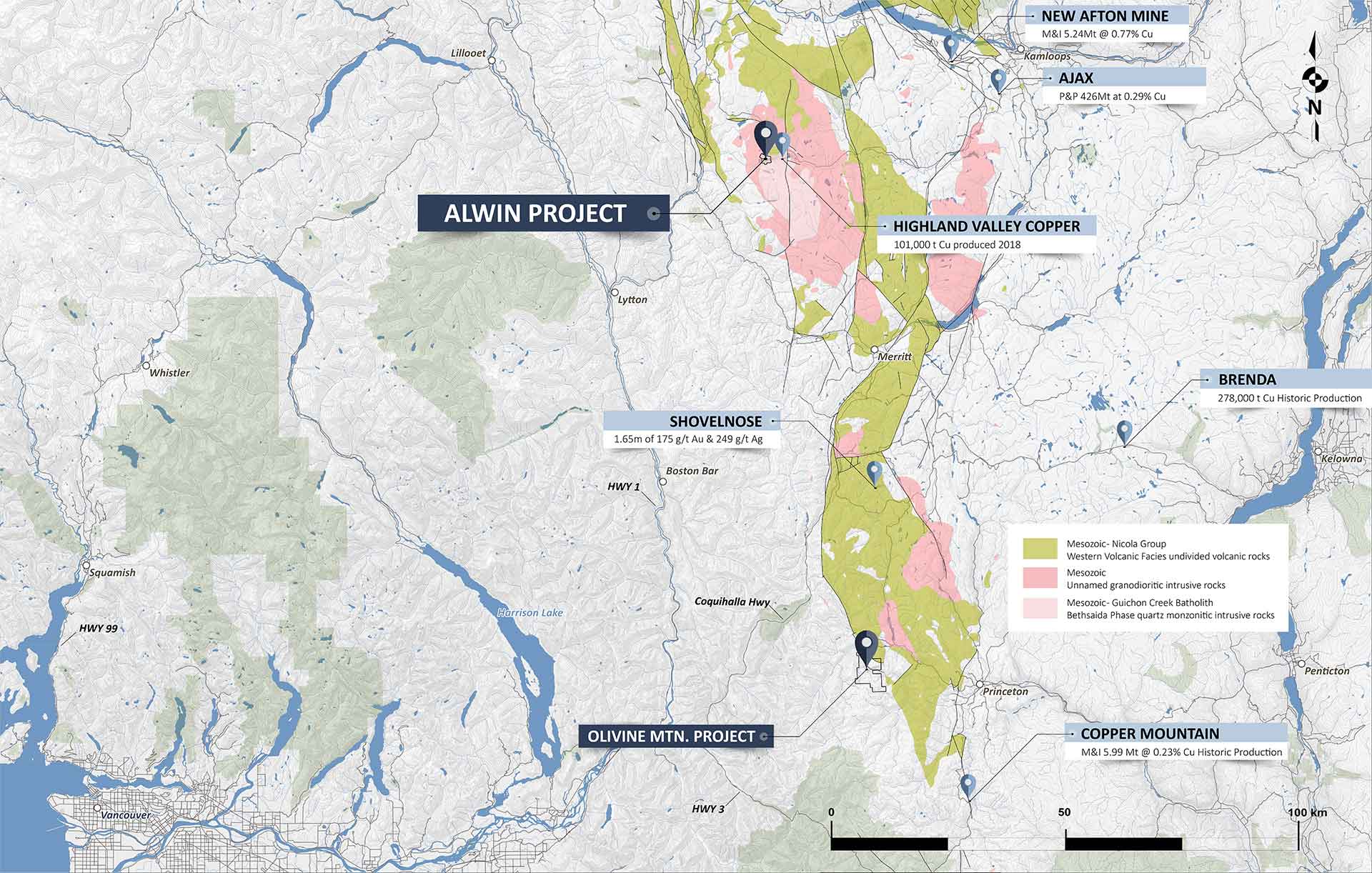
Our thesis is that the high grade Alwin mine was never considered in an open pit bulk tonnage scenario. Many of the “HVC” bulk tonnage intersections we encountered in Phase 1 drilling were not recorded in the historic dataset, or in the historic business plan. Open pit bulk tonnage mining was simply not considered in the Alwin Mine’s prior heyday. The historic data is focused strictly on high grade zones in an underground mine model and much of the mineralization that prior operators drilled through simply was not sampled or included in the orebody calculations as it would not meet a higher cutoff grade for underground mining.
Backing up a bit, the historic Alwin Mine was one of the first mineral occurrences developed in the famous Highland Valley Camp, with the bulk of the historic development occurring between the late 1960s to the early 1980s. During that era, operators of the mine were solely focussed on underground mining the high grade structure and did so with success – on and off operations for decades, mining on a small scale from a single track and in era’s of historically low copper prices.
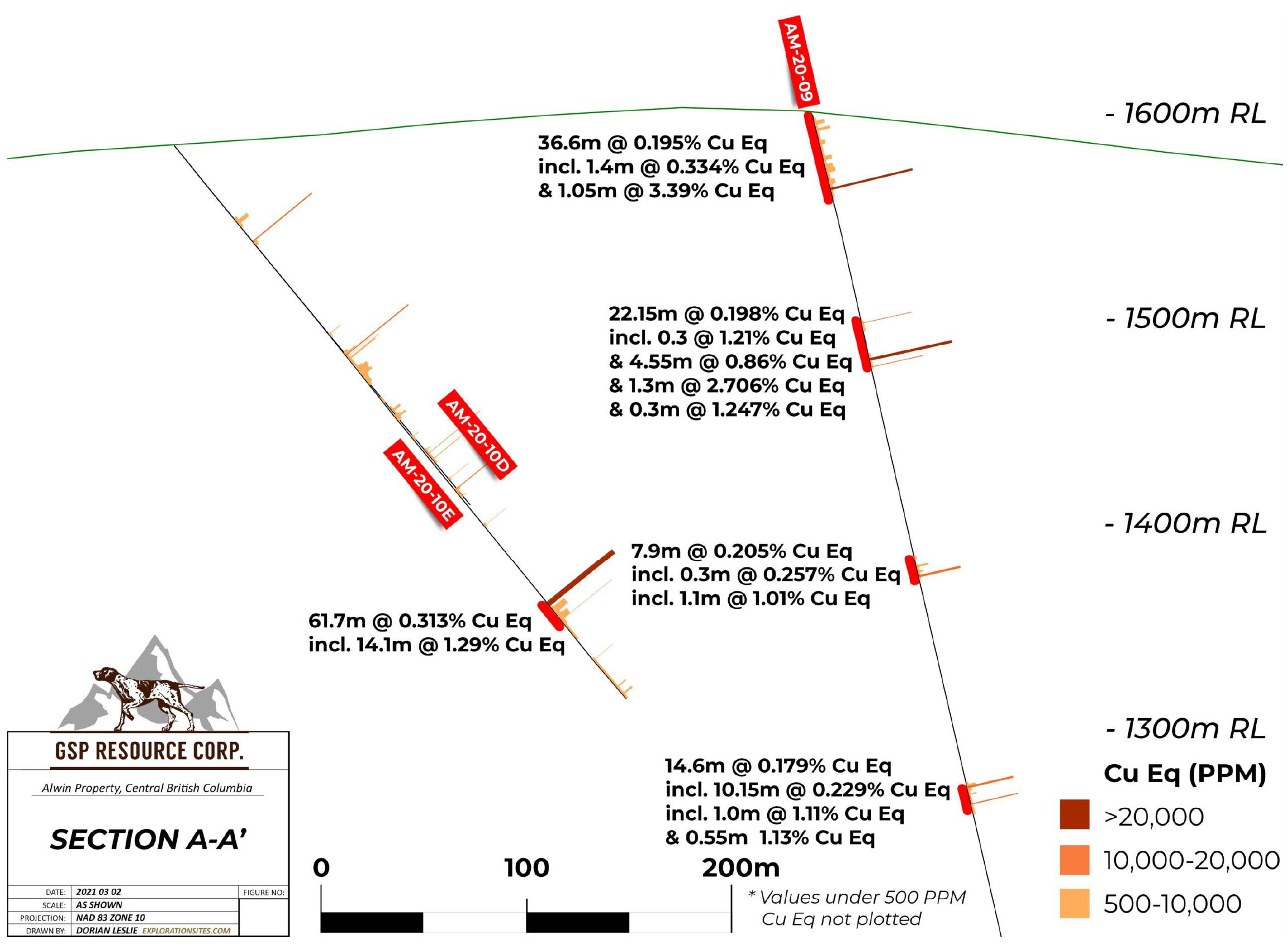
Hole 10E is interesting as it contains just over 14 meters of 1.29% CuEq, drilled just below the mined out zone #6. What can you tell us about the are that has previously been mined? Do you have production records? Does having a few mined zones help you to target your holes, or is it also quite inconvenient as it increases the odds to lose a hole?
We have a large database that helped guide the Phase 1 drilling. Records indicated that the underground mine was developed over a 500-metre-long by 300-metre-deep by 150-metre-wide volume, produced from 1916 to 1981, from six major subvertical zones, 233,100 tonnes that recovered 3,786 tonnes of copper, 2,729 kilograms of silver and 46.2 kilograms of gold. The average diluted head grade was 1.5 per cent copper.
The mine was shut down in 1981 due to low copper prices that did not support a relatively expensive underground mining method. The final operator was a private company with limited access to capital and they did not consider the potential for the Alwin to be a bulk tonnage open pit like many of the nearby modern mines in the Highland Valley Copper Camp. During the 1960-1980 Alwin development era the Valley deposit had only recently been discovered and most of the mining activity was occurring at the Jersey and Bethlehem pits several kilometres away from Alwin. Mining began at Lornex in 1972 and the Valley pit in 1983.
As far as old workings and interfering with drilling – it is somewhat of a challenge to drill into the main orebodies as you correctly point out there is a risk of encountering old workings, having to reduce core width, and or losing the drill’s circulation.
To address this risk, we have invested in 3D modelling the paper records of the old mine (which are quite detailed and extensive) into a digital format. To date, we have focused on a shallow orebody known as the number 4 zone which was what we drilled in the initial 8 holes – and we did not hit any old workings thanks to the model. As this initial modelling was a success, we believe its expansion will continue to assist our drilling efforts, and eventually form the foundation for a 43-101 compliant resource estimation at the appropriate juncture.
We expect to build out the model to include the other known orebodies in the next round of modelling, and ahead of phase 2 drilling. This will allow us to significantly reduce the chance of losing holes by drilling into old mine workings as we can plan to drill around them, or be prepared to drill through them. It is a modest investment that is well spent, in our view.

What are the next exploration steps to be undertaken at Alwin? Will we see more drilling? And where?
The next steps are to build out the aforementioned 3D model of the historic orebodies, combined with maps of the underground workings, and our recent drill data to determine Phase 2 drill targets. This work will be done while we wait for mother nature to melt the snow covering the mine site.
Once the snow has melted, we plan to embark on a phase 2 drilling program building on the success of the recently disclosed drilling program. While we have yet to finalize the drill targets; however, the success of hole 10E will serve as the baseline for our strategy going forward (e.g. deeper drill holes into and beyond the historic high grade orebodies).
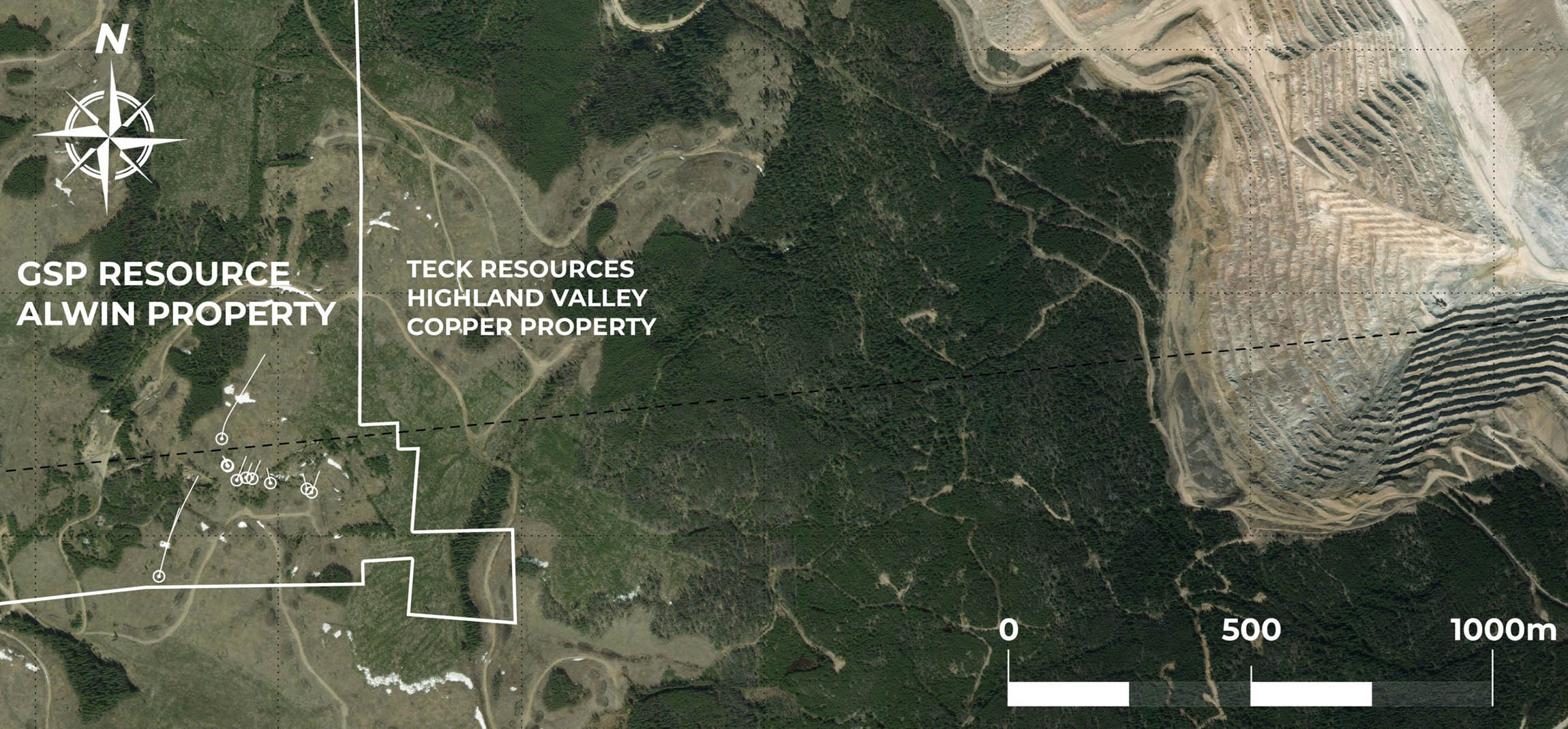
You have been working on the southeastern portion of the land package and the aerial photos (above) show Teck has been active just a few hundred meters from your holes on their side of the border. May we assume Teck is doing exploration drilling to figure out future pit laybacks?
We know that Teck has disclosed an application to extend the mine life of their HVC operation to 2040, and that a significant portion of the proposed additional tonnage is attributable to the Valley pit (the one next to us). If you look closely at the map, you can see a series of roads and clearings next to their open pit – we can guess that these might have been drill pads testing the Western side of the Valley deposit. (but we cannot say for certain). It is anyone’s guess but the key thing for us (a 5 million market cap explorer) is that we are the right neighbourhood for open pit mining.
To reiterate: GSP’s goal is to prove the open pit potential of the Alwin Mine – it is located favorably on a hilltop and the historic high grade mine was only very preliminarily developed, and it is shallow. All positive factors in our journey to determining the open pit potential of Alwin. There is a lot for us to uncover about the potential size of an open pit constrained resource vs an underground mine constrained scenario for Alwin, but we have had a great start and are in the right place, to be sure.
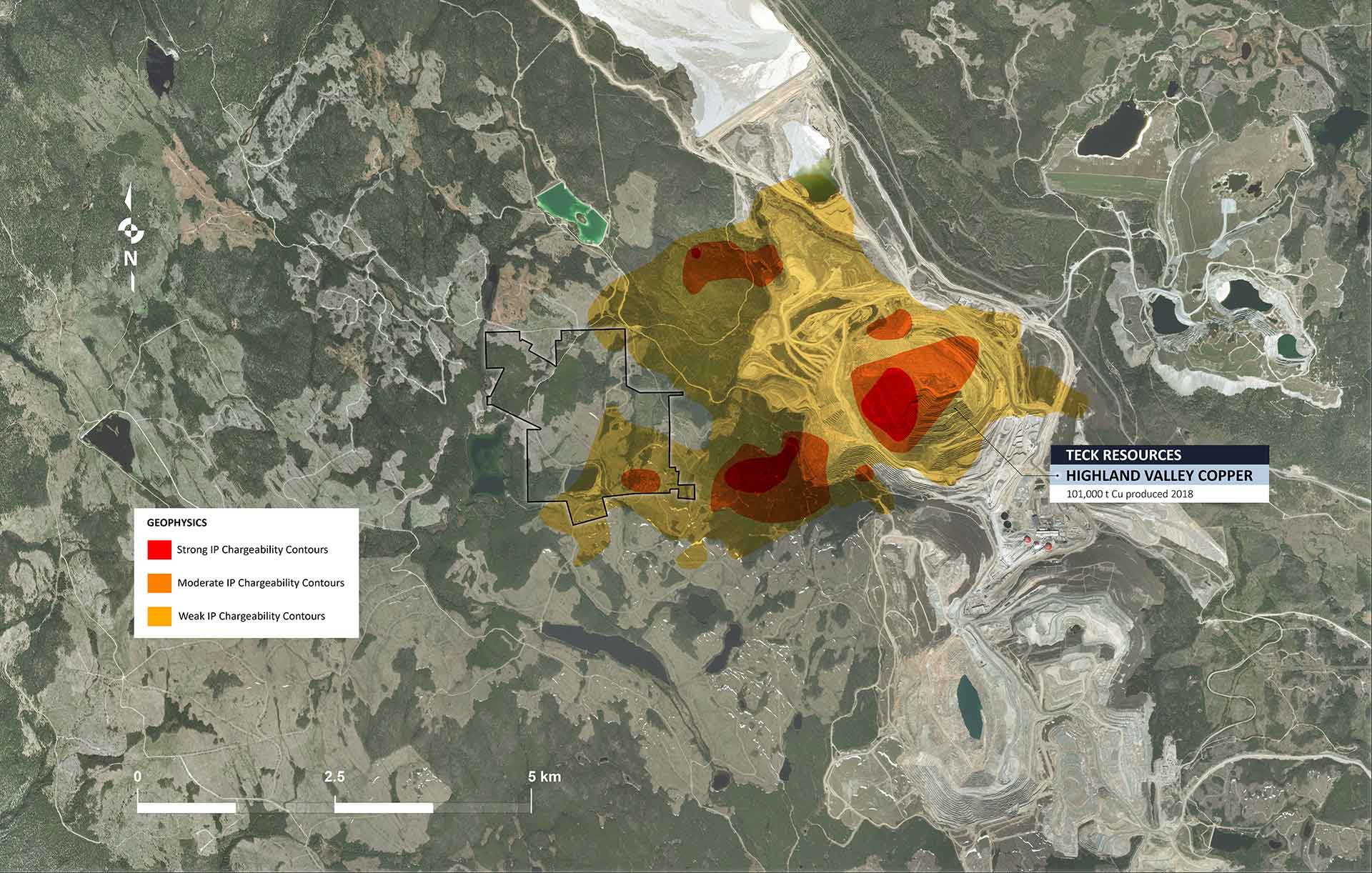
It probably also isn’t a coincidence Teck seems to be ‘drill to kill’ a large IP anomaly, as shown on the image above. Considering the Alwin project also contains a similar but smaller IP anomaly, Teck must be watching your drill campaigns with interest. What do you think Teck needs to see at Alwin before seeing you as an acquisition target? When we look at the aerial photos, it looks like Teck may need Alwin even if it’s just for the land to optimize the future layback plans for the open pit?
I have no idea what they need to see or if they are even watching. They might be – they might not be. GSPR’s concern is with the Alwin Mine and how to best explore it while maintaining a tight capital structure. We think there could an open pit scenario for the Alwin on a standalone basis – and that is what we are investigating. There are several hungry mills in the Kamloops and Merritt area (British Columbia’s Mining Heartland) and obviously HVC is the behemoth – but not the only operation. There could be synergies with other operations, but before we get way too ahead of ourselves, we are focusing on our own drilling programs and a potential open-pittable resource estimation for Alwin.
With respect to the IP anomaly, the above image is a projection of a district scale IP survey taken before the Valley pit was developed. The publicly available exploration literature suggests that the Highland Valley camp sees some correlation between moderate IP chargeability and the presence of porphyry copper mineralization. We need to be careful, though, as IP chargeability is only one tool in the geophysics/Geochem/geology toolbox and we cannot construe it as anything more than interesting and potentially useful data to include in our exploration model for Alwin.
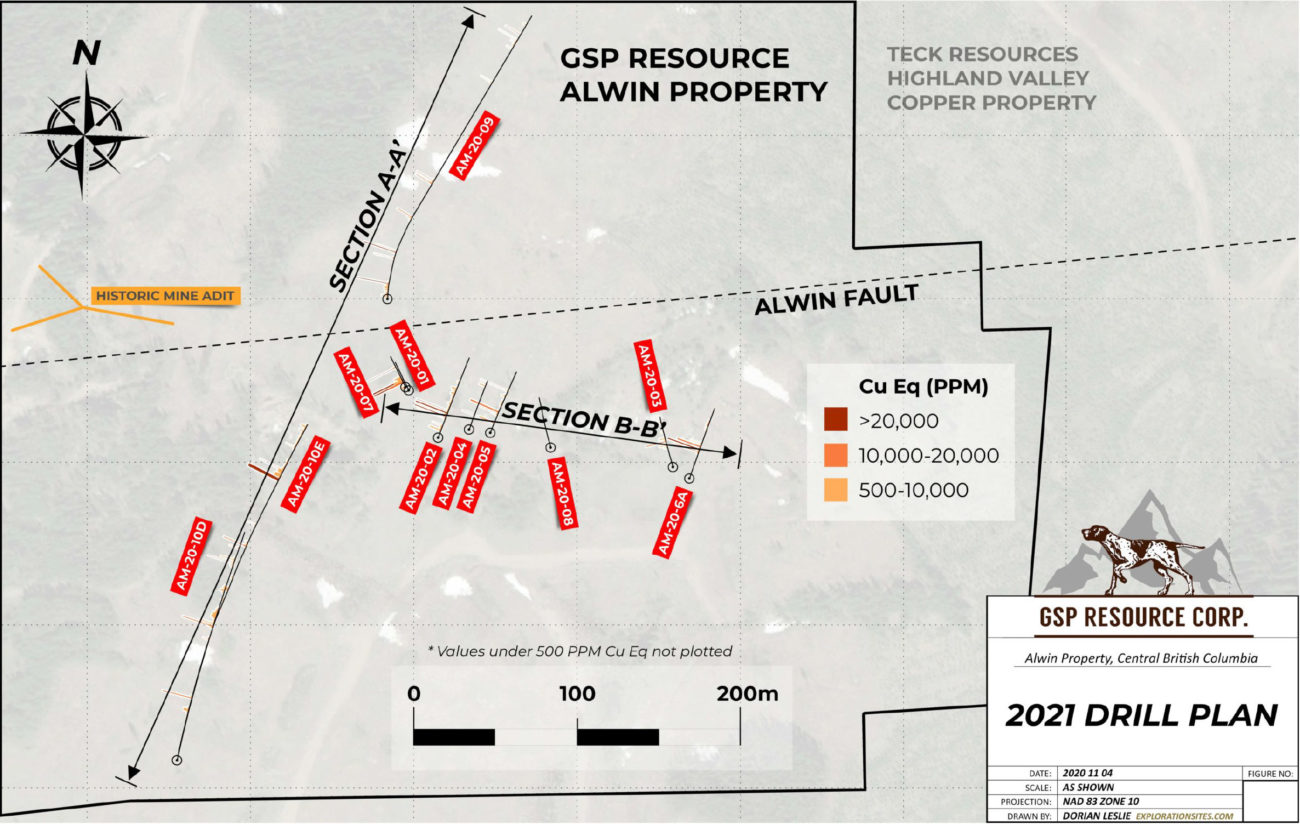
You’re running a very ‘lean and mean’ company and your overhead cost was just over C$100,000 in the quarter ending in November 2020. How much cash do you still have in the till right now from the C$1M you reported on that date, and where will that get you?
Our goal is to keep our capital structure as tight as possible, while still being able to explore and add value to our projects. As such, our run rate G&A burn including management fees is currently well under CAD$20,000 per month. Our cash balance sits at approximately C$ 800,000 today, however, we expect to receive Tax rebates and refunds (exploration and GST) in the coming months of approx. C$150k.
The preliminary budget for our next round of drilling at Alwin is approximately C$500,000 and we will be able to fund this program from cash on hand. In addition to our cash on hand we currently have approximately C$350,000 of in-the-money warrants outstanding (20c strike price).
With our low burn rate and strong focus on cost containment, we expect to be able to continue advancing the Alwin Mine project without necessitating overly dilutive financing.
Disclosure: The author has a long position in GSP Resources and recently exercised warrants. Please read the disclaimer.
